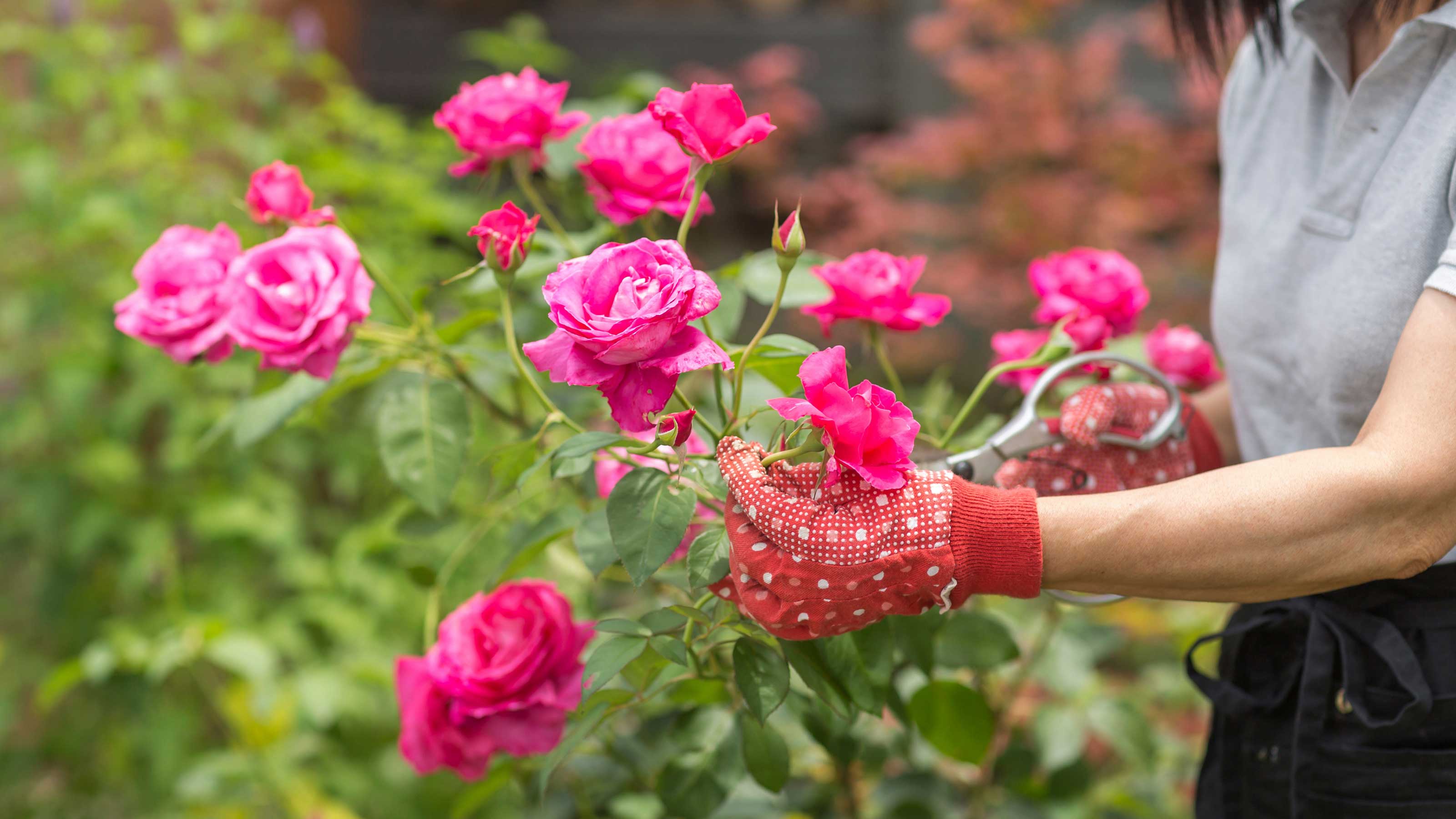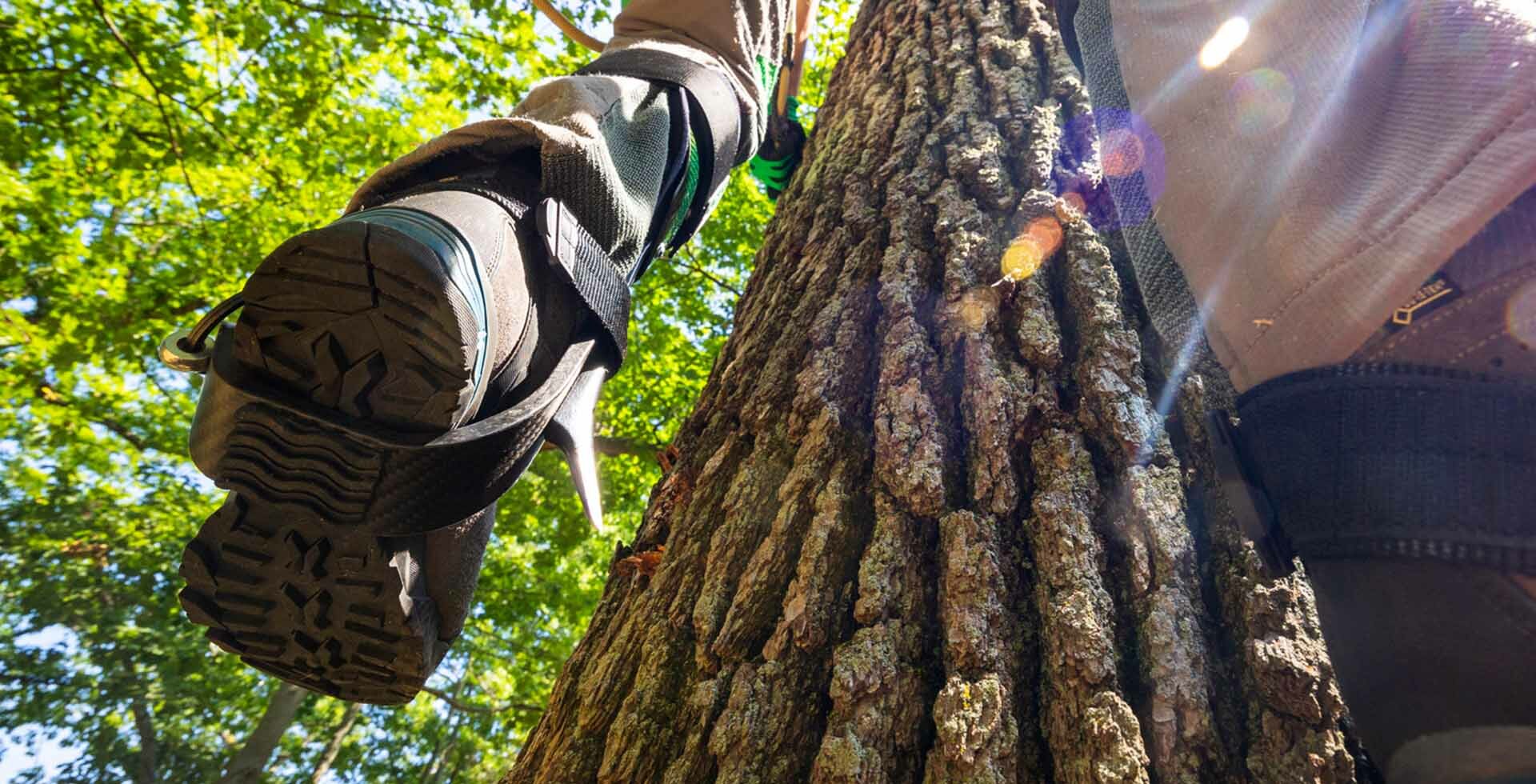Home>Gardening Techniques>Plant Care>How To Prune Climbing Roses After Blooming


Plant Care
How To Prune Climbing Roses After Blooming
Published: January 13, 2024
Learn the best techniques for pruning climbing roses after blooming to promote healthy growth and abundant blooms. Discover expert plant care tips for maintaining beautiful and thriving climbing rose plants.
(Many of the links in this article redirect to a specific reviewed product. Your purchase of these products through affiliate links helps to generate commission for Chicagolandgardening.com, at no extra cost. Learn more)
Table of Contents
Introduction
Welcome to the world of climbing roses! These enchanting plants have the remarkable ability to transform any outdoor space into a vibrant tapestry of color and fragrance. Whether adorning a trellis, fence, or arbor, climbing roses infuse charm and elegance into gardens, creating a captivating allure that's hard to resist.
In this comprehensive guide, we will delve into the art of pruning climbing roses after blooming, equipping you with the knowledge and skills to nurture these botanical beauties with confidence. From understanding the nature of climbing roses to mastering the essential pruning techniques, you will embark on a journey that celebrates the timeless allure of these majestic blooms.
Throughout this article, we will explore the best practices for pruning climbing roses, shedding light on the optimal timing, essential tools, and step-by-step instructions to ensure your roses thrive and flourish. Whether you're a seasoned gardener or a novice enthusiast, this guide will empower you to cultivate a stunning display of climbing roses that will captivate the senses and elevate the aesthetic appeal of your outdoor sanctuary.
So, let's embark on this horticultural adventure and unlock the secrets to nurturing and pruning climbing roses, as we celebrate the artistry of gardening and the enduring charm of these magnificent floral companions.
Understanding Climbing Roses
Climbing roses, with their graceful tendrils and abundant blooms, are a captivating addition to any garden. Unlike traditional shrub roses, climbing roses are characterized by their long, flexible canes that enable them to ascend and adorn various structures with their resplendent flowers. It’s important to note that while they are referred to as “climbing” roses, they do not possess the natural ability to attach themselves to surfaces like ivy or climbing plants. Instead, they rely on external support such as trellises, fences, or arbors to showcase their stunning growth habit.
One of the most distinguishing features of climbing roses is their remarkable versatility. They come in a diverse array of forms, from large-flowered hybrids to smaller clusters of blooms, offering a spectrum of colors and fragrances to suit every gardener’s preferences. Additionally, climbing roses can bloom once a season or repeatedly throughout the growing period, providing an extended showcase of their floral splendor.
Understanding the growth and blooming patterns of climbing roses is essential for successful pruning. Many climbing rose varieties produce flowers on one-year-old canes, meaning that they bloom on canes that grew during the previous season. This characteristic plays a pivotal role in determining the optimal timing for pruning, as it ensures that the plant’s future blooms are preserved and nurtured.
By comprehending the unique characteristics and growth habits of climbing roses, gardeners can cultivate a deeper appreciation for these botanical marvels. As we continue our exploration, we will unravel the art of pruning climbing roses after blooming, harnessing our understanding of these enchanting plants to foster their health and vitality.
When to Prune Climbing Roses
Pruning climbing roses at the right time is crucial to maintaining their vigor and promoting abundant blooms. The timing of pruning is intricately linked to the flowering habits of climbing roses, ensuring that the plant’s growth cycle is harmoniously supported. Understanding the seasonal nuances of climbing roses is paramount in determining the opportune moment for pruning.
For climbing roses that bloom once a season, it is generally recommended to prune them immediately after their flowering period. This post-blooming pruning approach allows the plant to channel its energy into producing new growth and developing robust canes for the following year’s blooms. By promptly removing spent blossoms and shaping the plant after its initial flush of flowers, gardeners can encourage a healthy and prolific display of blooms in the subsequent growing season.
Conversely, climbing roses that exhibit repeat blooming tendencies benefit from a different pruning strategy. These varieties thrive when pruned in early spring, before new growth commences. This timing enables the plant to rejuvenate and prepare for the upcoming flowering cycles, promoting the emergence of fresh canes and encouraging a bountiful succession of blooms throughout the growing season.
It’s important to approach the task of pruning climbing roses with a keen awareness of their unique blooming patterns. By aligning the pruning schedule with the plant’s natural rhythms, gardeners can nurture their climbing roses to reach their full ornamental potential, ensuring a captivating spectacle of blossoms that embellish the garden with enduring beauty.
Tools for Pruning Climbing Roses
Equipping yourself with the right tools is essential for executing precise and effective pruning of climbing roses. The proper selection of tools not only facilitates the pruning process but also contributes to the overall health and vitality of the roses. Here’s a rundown of the essential tools for pruning climbing roses:
- Pruning Shears: Also known as secateurs, pruning shears are indispensable for trimming small canes and removing spent blooms. Opt for high-quality bypass pruning shears, which feature curved blades that provide clean cuts and minimize stem damage.
- Loppers: When dealing with thicker canes, loppers offer the leverage and cutting power needed to tackle larger branches with precision. Look for loppers with sharp blades and sturdy handles for efficient pruning.
- Pruning Saw: For exceptionally thick or stubborn canes, a pruning saw is an invaluable tool. Its serrated blade effortlessly cuts through tough wood, enabling you to trim and shape the rose plant with ease.
- Gloves: Investing in a pair of durable gardening gloves is essential for protecting your hands from thorns and prickles while pruning climbing roses. Opt for gloves that offer a balance of dexterity and protection, allowing you to maneuver around the plant with confidence.
- Cleansing Solution: To prevent the spread of diseases between plants, it’s advisable to have a cleansing solution such as rubbing alcohol or a diluted bleach solution on hand. Use this to sterilize your pruning tools before and after each use, minimizing the risk of transmitting infections.
By arming yourself with these essential pruning tools, you’ll be well-prepared to embark on the rewarding task of shaping and nurturing your climbing roses. These tools not only facilitate the pruning process but also contribute to the overall health and vitality of the roses, ensuring that they continue to grace your garden with their resplendent beauty for seasons to come.
Steps for Pruning Climbing Roses
Pruning climbing roses is a gratifying endeavor that promotes the plant’s health and encourages abundant flowering. By following a systematic approach, gardeners can effectively prune their climbing roses to foster vigorous growth and a stunning floral display. Here are the essential steps for pruning climbing roses after blooming:
- Assess the Plant: Begin by assessing the overall condition of the climbing rose. Identify any damaged, diseased, or dead canes that need to be removed, as well as any crossing or overcrowded branches that may impede airflow and sunlight penetration.
- Remove Spent Blooms: Using pruning shears, carefully trim away spent blooms by making clean cuts just above a set of healthy leaves or an outward-facing bud. This encourages the development of new flowering shoots and maintains the plant’s aesthetic appeal.
- Prune for Shape and Structure: Trim back any excessively long or wayward canes to maintain the desired shape and structure of the climbing rose. Focus on retaining vigorous, healthy canes that contribute to the plant’s overall form and balance.
- Secure and Train Canes: As you prune, assess the positioning of the canes and secure them to the supporting structure using soft ties or twine. This helps guide the growth of the canes and prevents them from becoming entangled or misaligned.
- Apply Cleansing Solution: After completing the pruning process, it’s important to sterilize your pruning tools with a cleansing solution to minimize the risk of spreading diseases. Wipe down the blades with rubbing alcohol or a diluted bleach solution to ensure that they are clean and free from potential contaminants.
- Monitor New Growth: Keep a watchful eye on the climbing rose as new growth emerges. Regularly inspect the plant for any signs of disease or pest infestations, and promptly address any issues that may arise to safeguard the plant’s well-being.
By diligently following these steps, gardeners can prune their climbing roses with confidence, nurturing the plant to thrive and flourish. Each meticulous cut and thoughtful adjustment contributes to the overall health and vitality of the climbing rose, paving the way for a spectacular showcase of blooms in the seasons to come.
Conclusion
As we bring our journey through the art of pruning climbing roses to a close, it’s evident that this horticultural practice embodies a harmonious blend of artistry and science. Pruning climbing roses after blooming is a transformative act that nurtures the plant’s well-being and sets the stage for a resplendent display of blossoms in the forthcoming seasons.
By understanding the unique characteristics and growth habits of climbing roses, gardeners can approach the task of pruning with a deeper appreciation for the intricate interplay between the plant’s natural rhythms and the gardener’s nurturing touch. This symbiotic relationship fosters an environment where the climbing rose can thrive, unfurling its captivating blooms and adorning the garden with timeless elegance.
Armed with the knowledge of the optimal timing for pruning, the essential tools required, and the systematic steps to follow, gardeners can confidently embark on the gratifying journey of shaping and nurturing their climbing roses. Each thoughtful cut and meticulous adjustment contributes to the overall health and vitality of the plant, ensuring that it continues to enchant with its resplendent beauty for seasons to come.
As we bid adieu to this exploration of pruning climbing roses, may your gardening endeavors be imbued with the joy of tending to these magnificent floral companions. Let the artistry of pruning intertwine with your passion for gardening, as you cultivate a flourishing tapestry of climbing roses that grace your outdoor sanctuary with enduring charm and allure.


